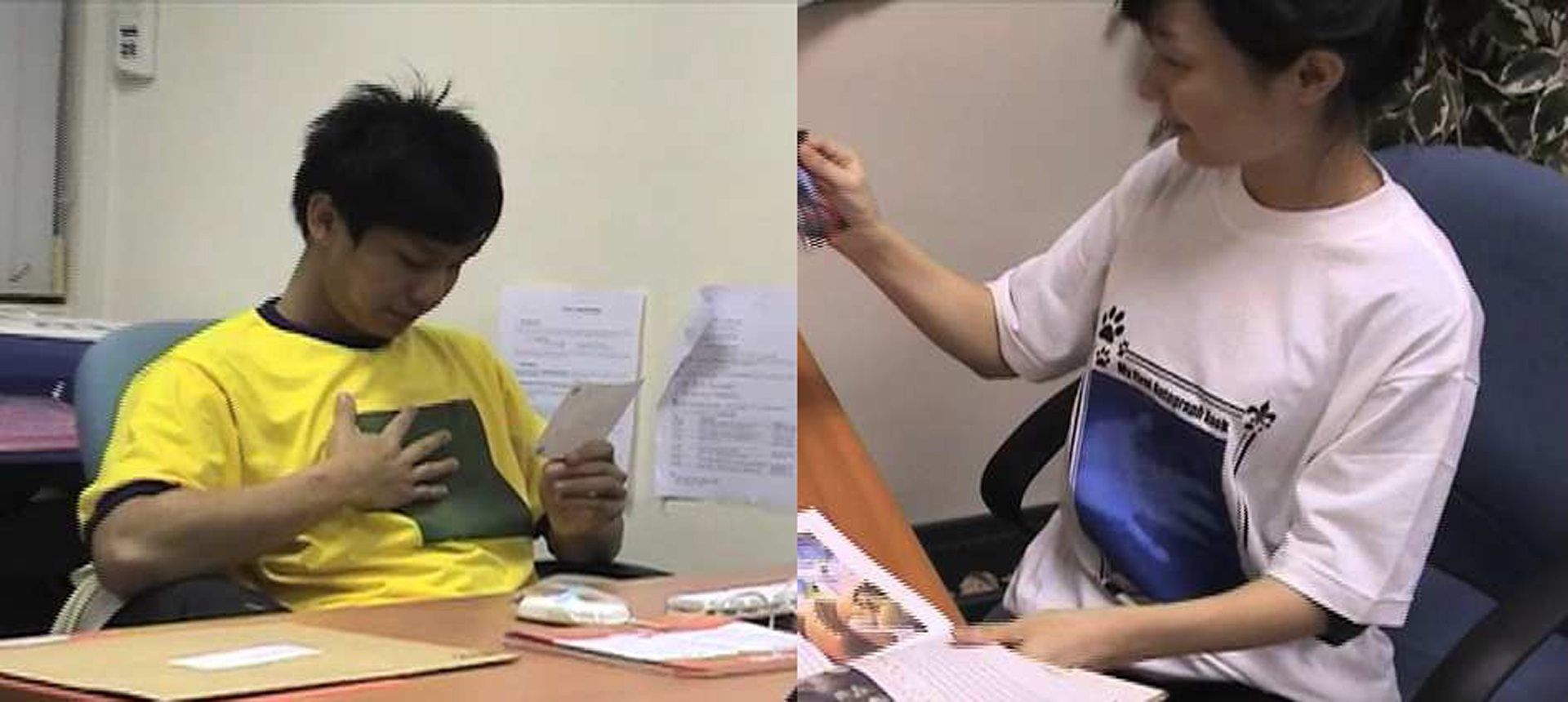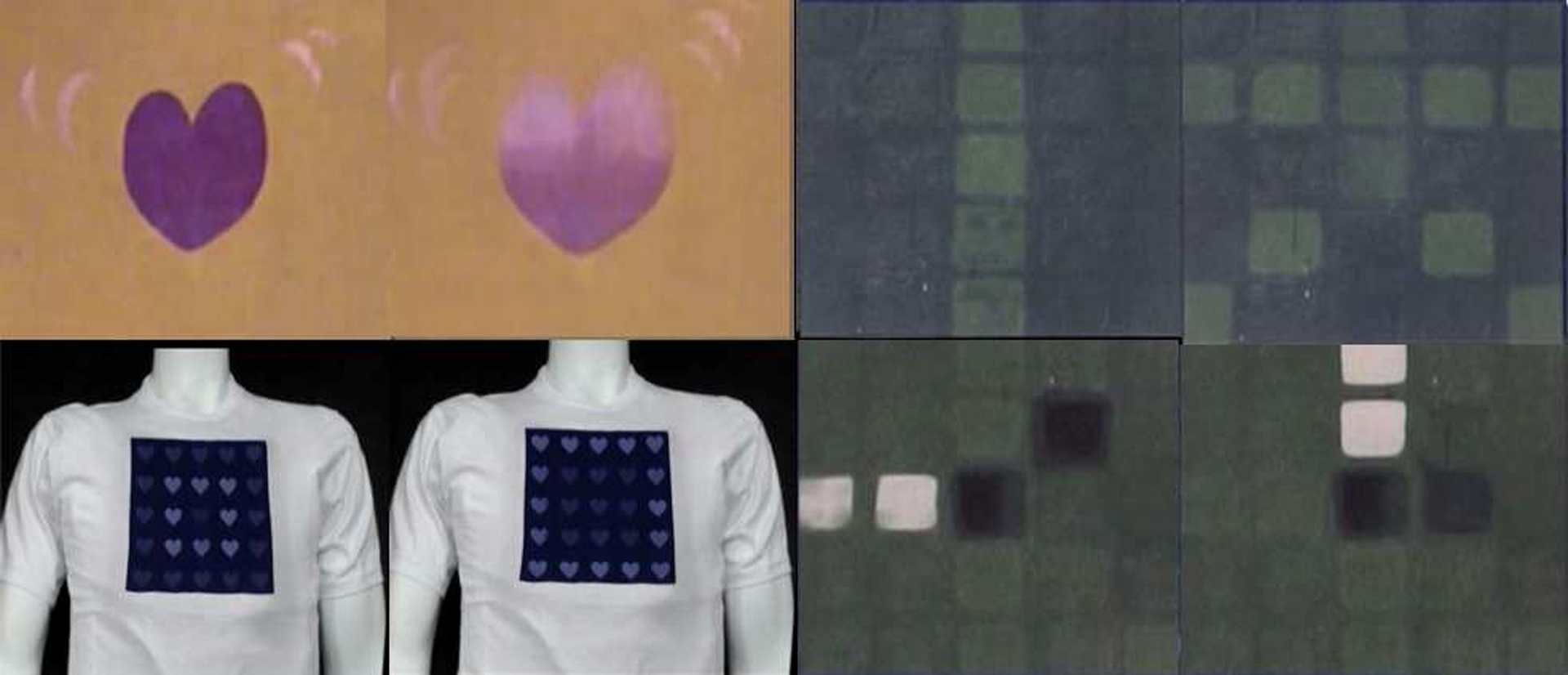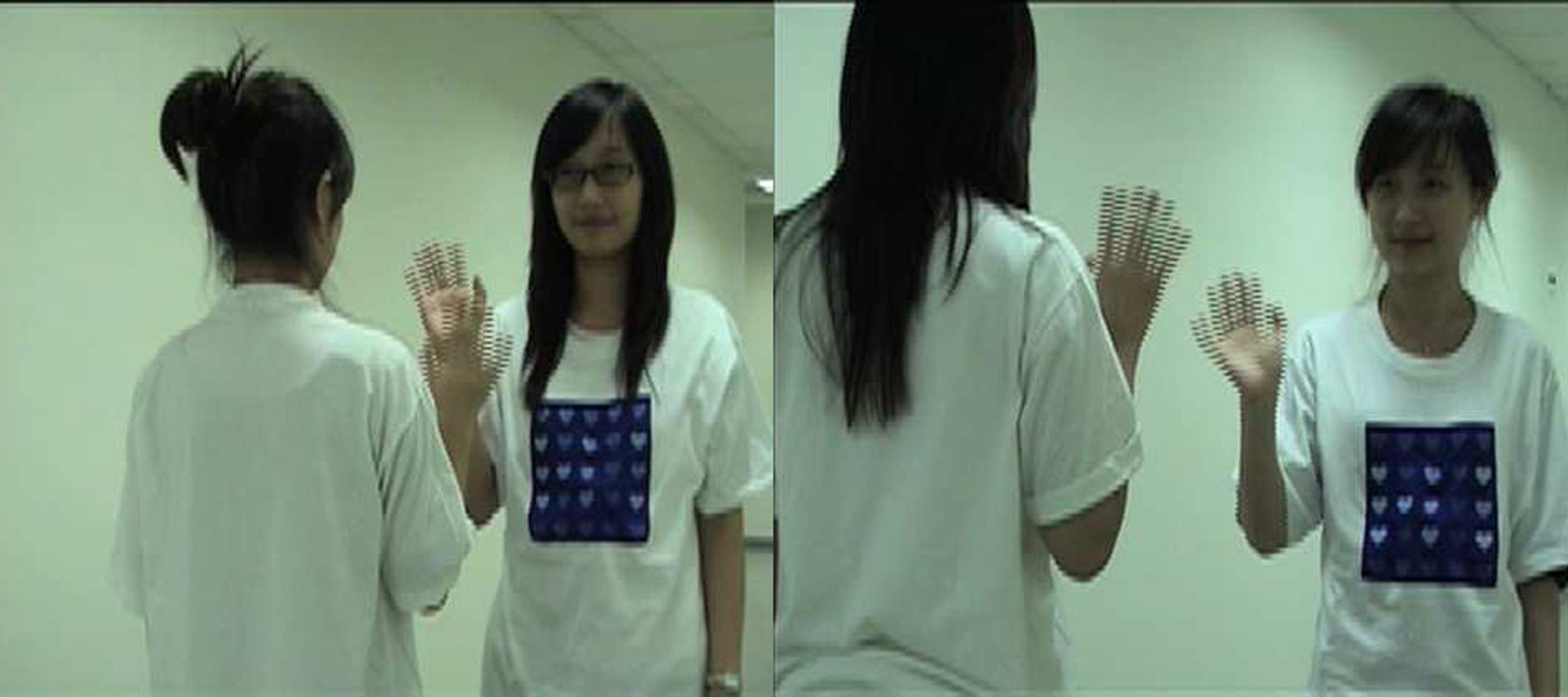“AmbiKraf: An embedded non-emissive and fast changing wearable display” by Peiris, Cheok, Teh, Fernando, Yingqian, et al. …
Conference:
Type(s):
Entry Number: 01
Title:
- AmbiKraf: An embedded non-emissive and fast changing wearable display
Presenter(s):
Description:
AmbiKraf is a novel non-emissive analog fabric display that has rapid color changing capability. It is integrated into the soft fabric enabling novel animations and interactive scenarios in the normal clothes that we wear. The core novelty of this project lies within the actual implementation of a fabric embedded with Peltier junction semiconductor to form a robust and wearable fabric display. In addition, our key novelties extend to its fast, accurate and bidirectional control through in-fabric semiconductor based heating and cooling systems. This enables the capability of displaying animations and facilitating many interaction scenarios through everyday clothes.
Fabric displays are gaining more attention as a novel form of wearable displays. Researchers are looking into new ways of converting fabrics for many purposes ranging from information display to a medium of expression. Fabric displays are generally categorized as emissive and non-emissive displays. Emissive displays include a range of displays that embed lighting material including LEDs, electro-luminescent wires and sheets, etc. These displays, are less popular as a daily item of clothing as they draw too much attention, are obtrusive and distractive. Usually such displays are used for more specific functionalities or purposes such as advertising.
Due to such limitations of emissive clothing, researchers have focused on non-emissive technologies for displays. Fabcell [Shibutani and Wakita 2006], uses liquid crystal inks as a multicolor non emissive fabric display with conductive yarn as the source of heat to actuate the color change. Liquid crystals are able to display a range of colors. Thermochromic inks have also been used for non-emissive fabric displays. They have the advantage of being robust and washable. However, thermochromic inks provide single color change, which allows it to only reveal an image or a color by heating. Such displays have typically used conductive yarn as the source of heat for actuation. Without any cooling technology for thermally actuated color change, these fabric displays are unidirectional with slow color change, as there is no way to actuate them back to the original color. Therefore the disadvantage is that animations or fast color change is impossible on these thermochomic fabric displays.
Overcoming these limitations such as the unsuitability of emissive displays in more social and home environments, or the non-robustness, slow and one directional change of current nonemissive displays, we thrive to innovate a novel concept of nonemissive fabric display technology which is robust for wear, can display impressive subtle animations with high speed control of color change, and enable more interactive scenarios through fashion.Peiris
Other Information:
References
SHIBUTANI, M., AND WAKITA, A. 2006. Fabcell: fabric element. In SIGGRAPH ’06: ACM SIGGRAPH 2006 Emerging technologies, ACM, New York, NY, USA, 9.






